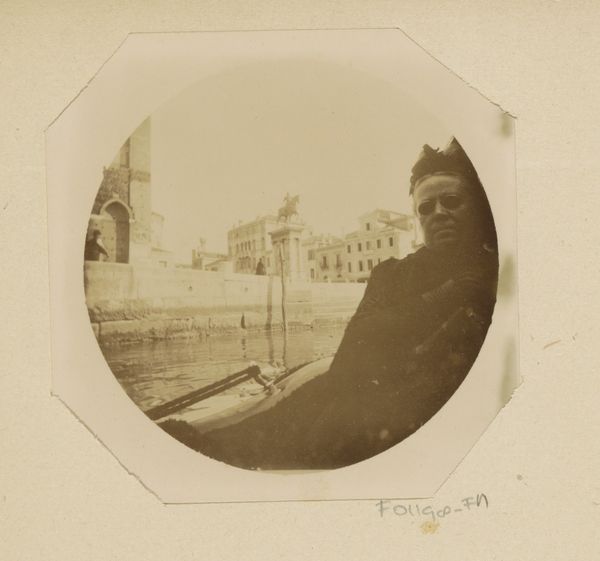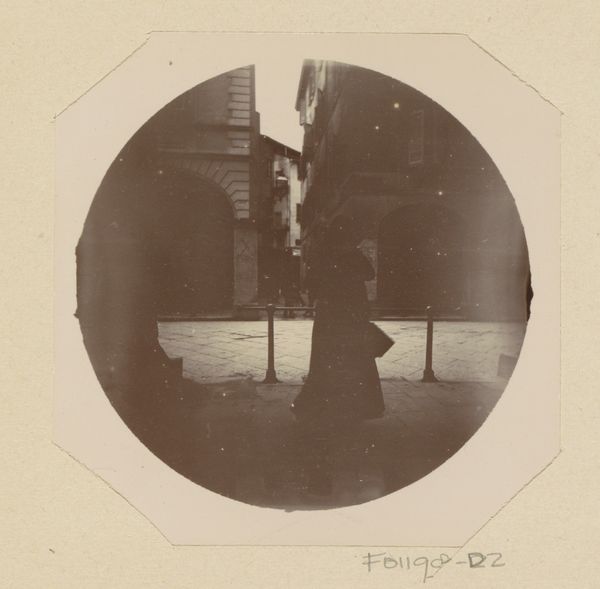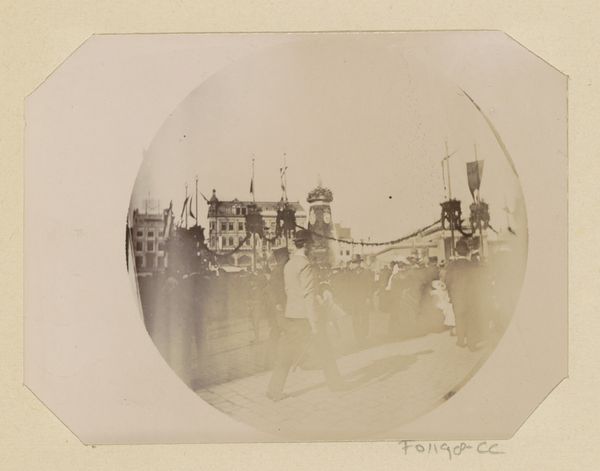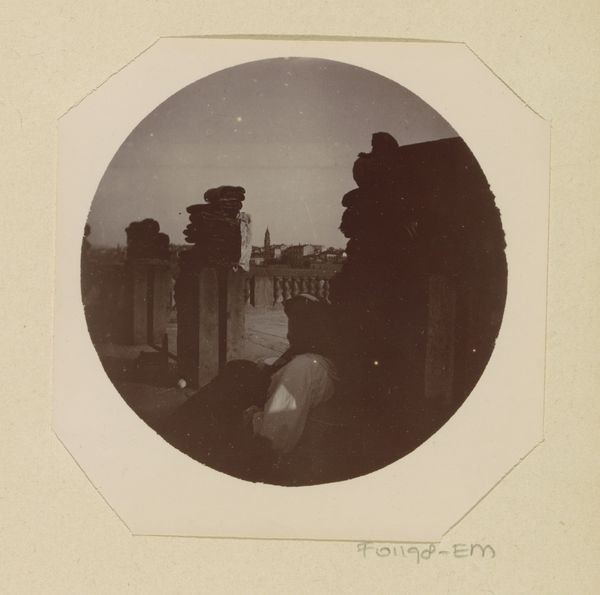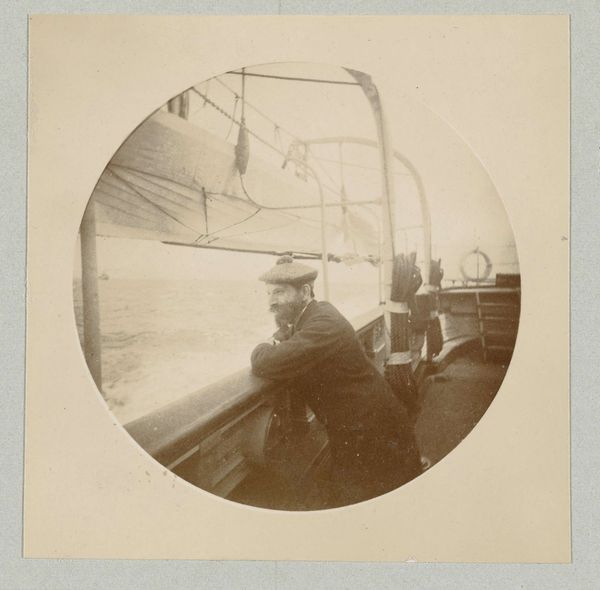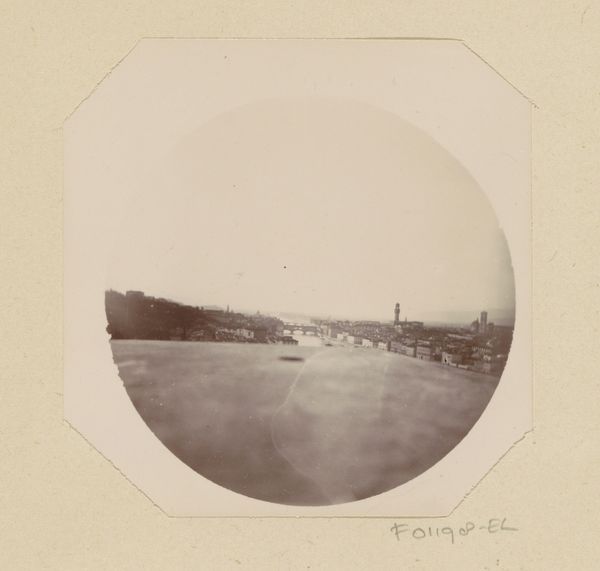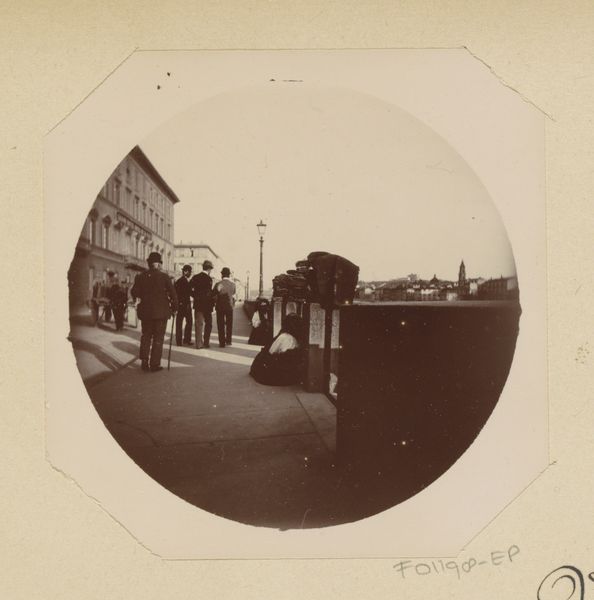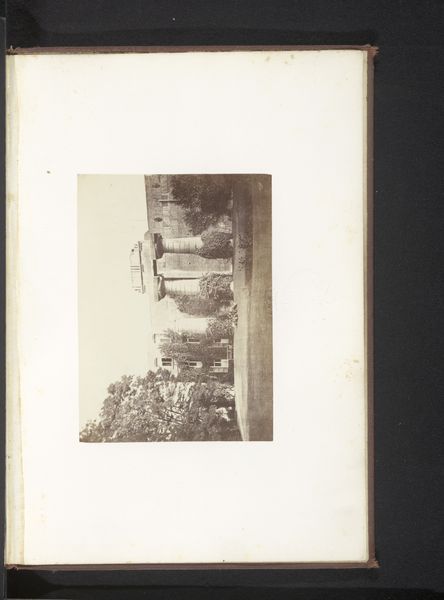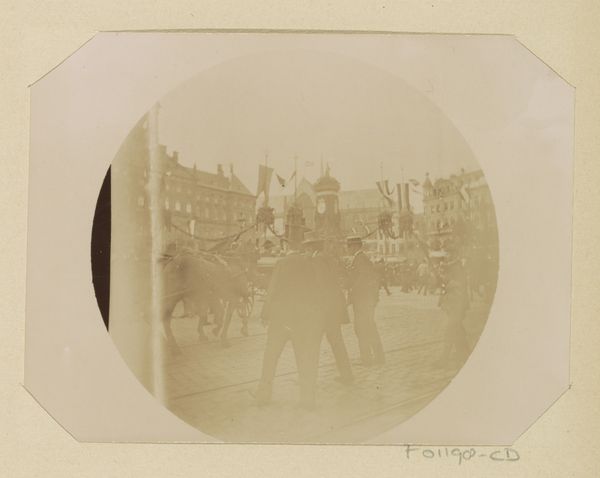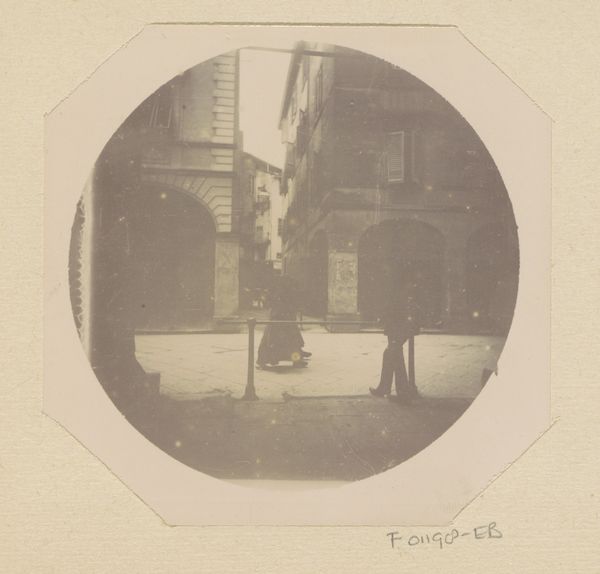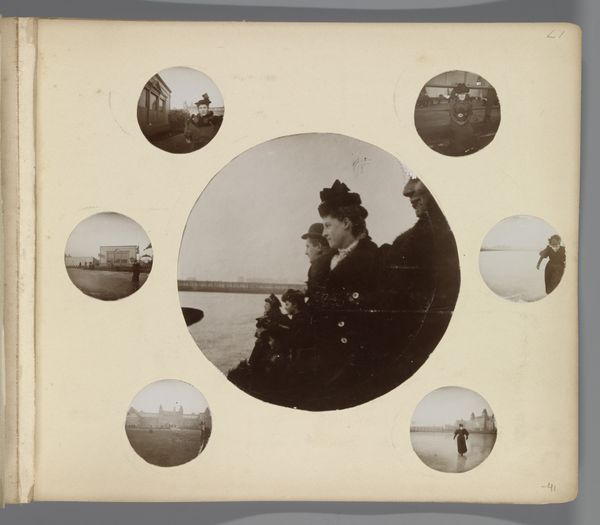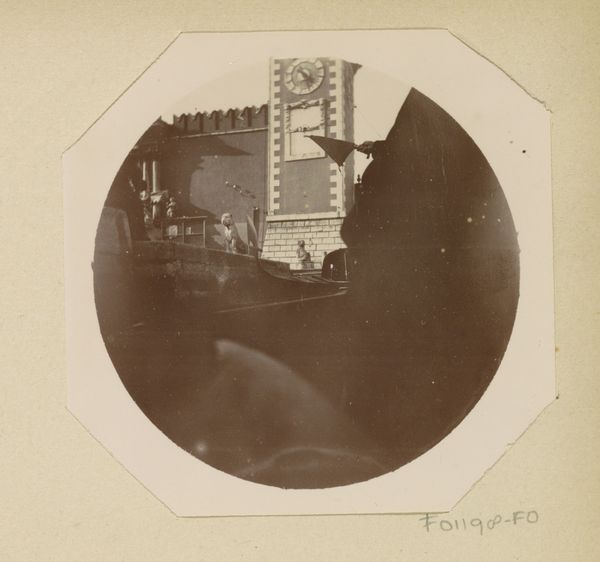
Straatverkoper met koopwaar bij een balustrade langs de Arno in Florence 1889 - 1893
0:00
0:00
photography, gelatin-silver-print
#
portrait
#
landscape
#
photography
#
orientalism
#
gelatin-silver-print
#
cityscape
Dimensions: height 99 mm, width 100 mm
Copyright: Rijks Museum: Open Domain
Curator: What a scene—almost dreamlike. Johanna Margaretha Piek captured this moment, sometime between 1889 and 1893. It's a gelatin-silver print, showing a street vendor with his wares, posed against a balustrade along the Arno in Florence. Editor: Immediately, the hazy quality strikes me. It's both intimate, focusing on the vendor's presence, and distanced, like looking through a portal onto another time. Is this an idealized view or a depiction of lived experience? Curator: Perhaps both. There’s certainly an element of Orientalism here—an imagined 'otherness' of Florence as a distant locale, filtered through a European gaze, quite literally framed by the architectural details. Editor: The subject's face is cast in deep shadow, which unfortunately reproduces a visual rhetoric of the period. We have to question the ethics of documenting other cultures when representation runs the risk of exoticism and further marginalization. How does this portrayal differ from similar artistic representations of the period, and what power dynamics are at play? Curator: That's a critical question, indeed. On a different note, it's fascinating how the architecture—the balustrade, the buildings across the river, topped by a dome—adds to the image's depth. They pull us back into the landscape, creating a push and pull, keeping us from becoming entirely absorbed by the figure of the vendor himself. The soft gradation of light almost gives the buildings a watercolor appearance, beautifully balancing photographic precision and atmospheric effect. It gives me the strange sense of being present in this place, in this city that Piek observed. Editor: Precisely, yet it's crucial we confront how historical lenses shaped whose stories are prioritized. Works such as this push us to understand those biases in visual culture while urging future narratives of diverse agency. Curator: It really does prompt contemplation beyond just what's visible. Editor: Agreed. Ultimately, a picture frozen in time, and a good place to begin talking about those dynamics of power.
Comments
No comments
Be the first to comment and join the conversation on the ultimate creative platform.
